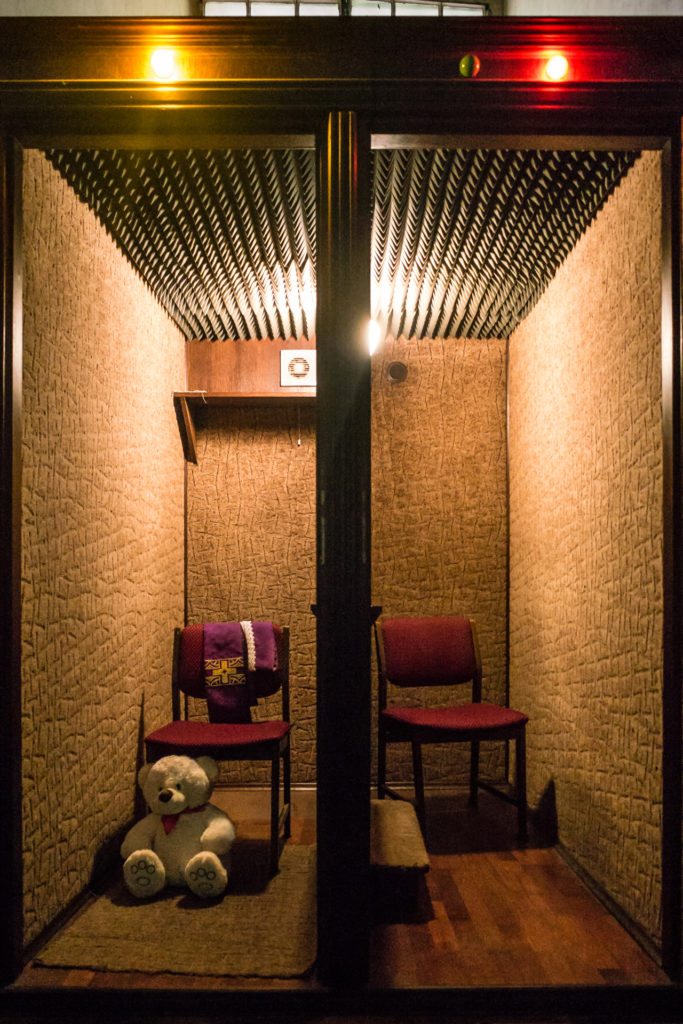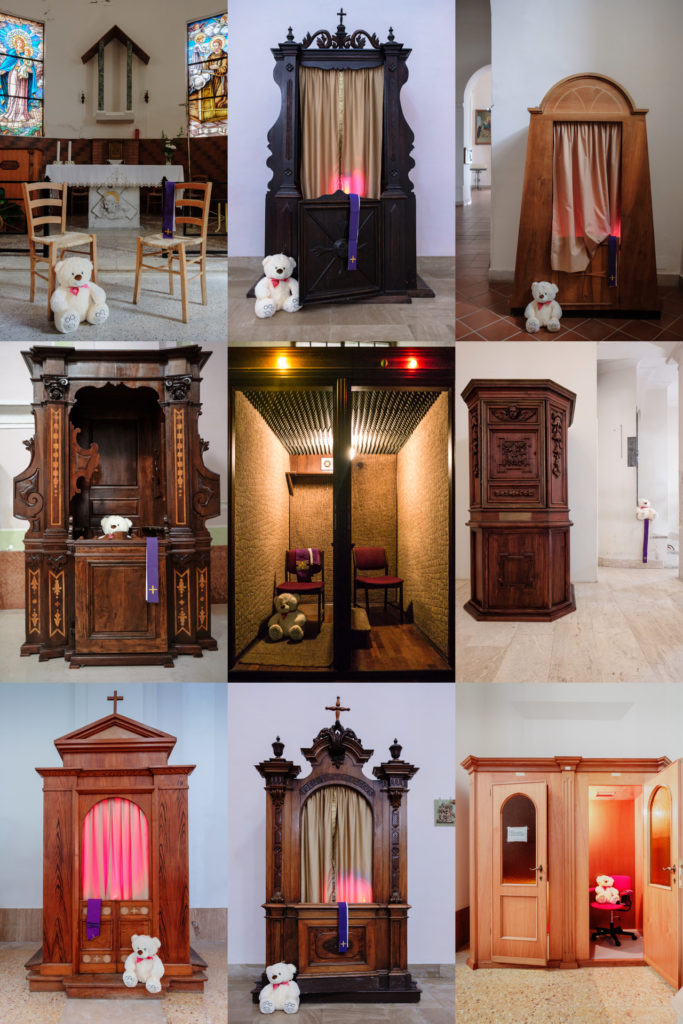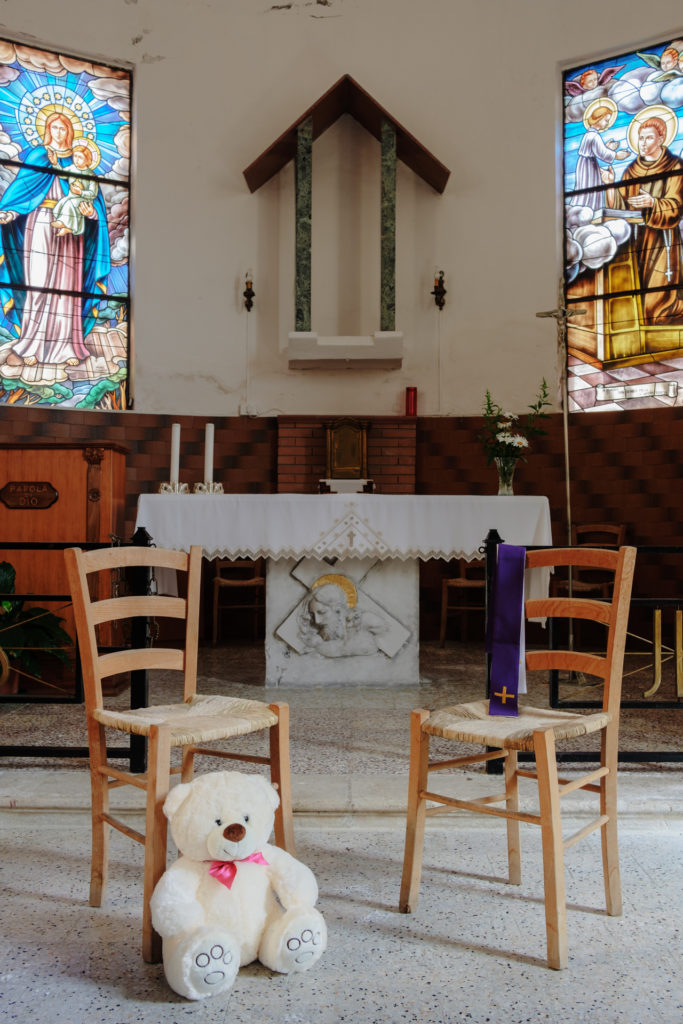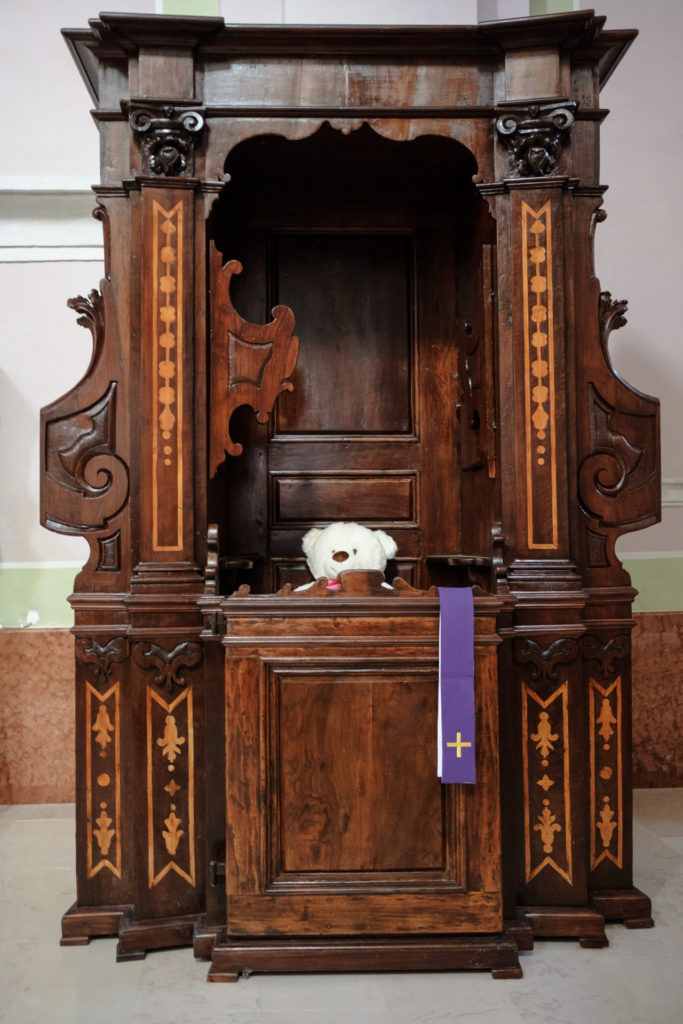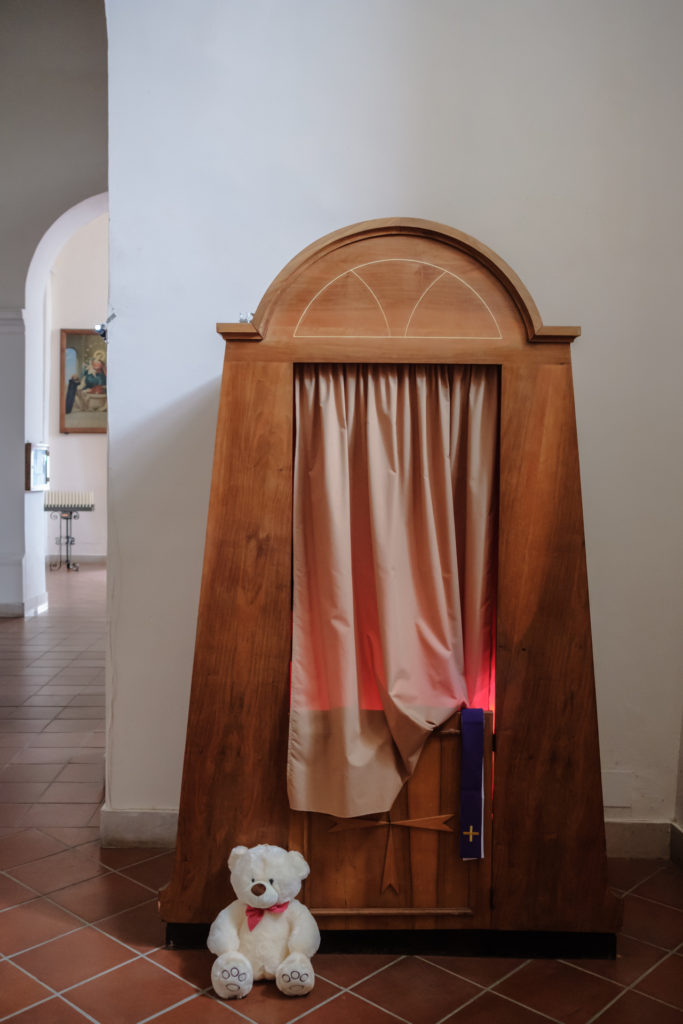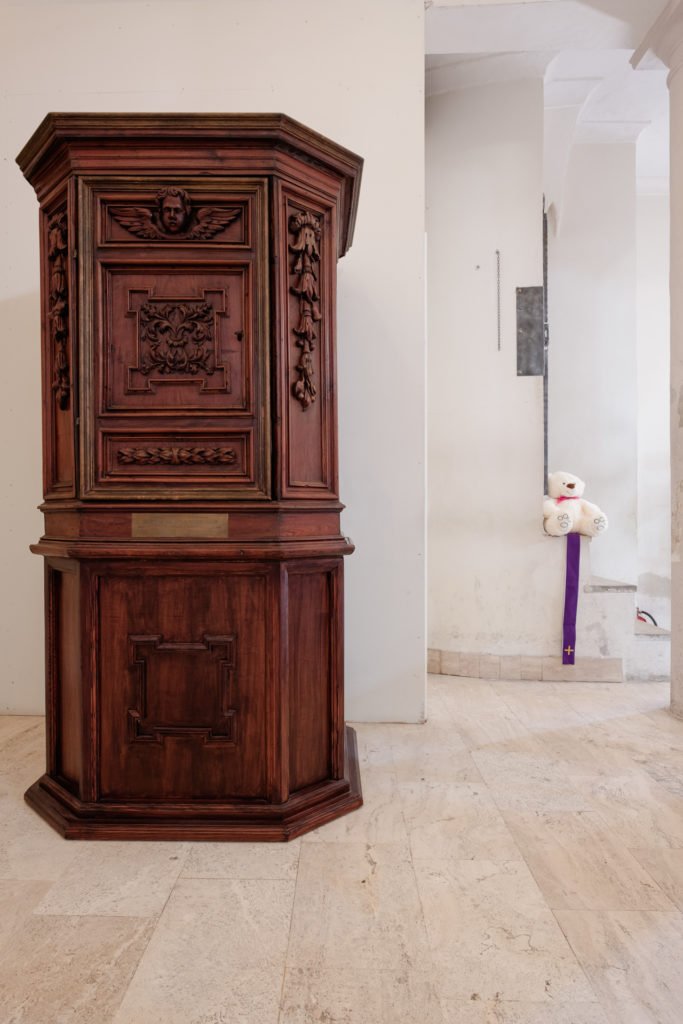Whose Confession? (2017)
Whose Confession reflects upon the children’s stolen innocence at the hands of the perpetrators of sexual offenses within the Roman Catholic Church. Far from being a request for the sacramental absolution of the culprits, the present body of work is intended rather to be a request for confession, an appeal to the fall of the widespread curtain of silence.
Sexual abuse of children has been reported in the Catholic Church for decades, with allegations against thousands of religious leaders, predominantly priests. The number of victims coming forward has sharply increased since 2010. While investigators have documented tens of thousands of cases in 26 countries, researchers conclude that many victims, especially in Asia and Africa, have yet to come forward.
The victims include both boys and girls, with the majority reported to be between the ages of 11 and 14, according to a research study produced for the United States Conference of Catholic Bishops. A comprehensive Australian study by former priests found that one in 15 Catholic priests worldwide had sexually abused children.
Notwithstanding the scale of the crimes, the issue remained a taboo for the Catholic hierarchies. The Catholic Church engaged in a widespread cover-up of the abuses, with popes and bishops fostering a culture of secrecy that has resulted in gross failures in transparency, both personal and institutional accountability, and trust. In 2014, however, Pope Francis established a Vatican commission to root out sexual abuse of children in parishes and prevent future abuse. The Church has removed 800 priests from their positions and sentenced over 2500 to a lifetime of penance or other lesser sanction. Despite this, few of the Church’s child sex offenders have been prosecuted for their crimes.
Juxtaposed to the confessional stole, the Teddy Bear is the allegory of the children’s stolen innocence.
– “Penitenziagite! Watch out for the draco who cometh in futurum to gnaw your anima! Death is super nos! Pray the Santo Pater come to liberar nos a malo and all our sin! Ha ha, you like this negromanzia de Domini Nostri Jesu Christi! Et anco jois m’es dols e plazer m’es dolors… Cave el diabolo! Semper lying in wait for me in some angulum to snap at my heels. But Salvatore is not stupidus! Bonum monasterium, and aqui refectorium and pray to Dominum Nostrum. And the resto is not worth merda. Amen. No?” — Umberto Eco, The Name of the Rose

